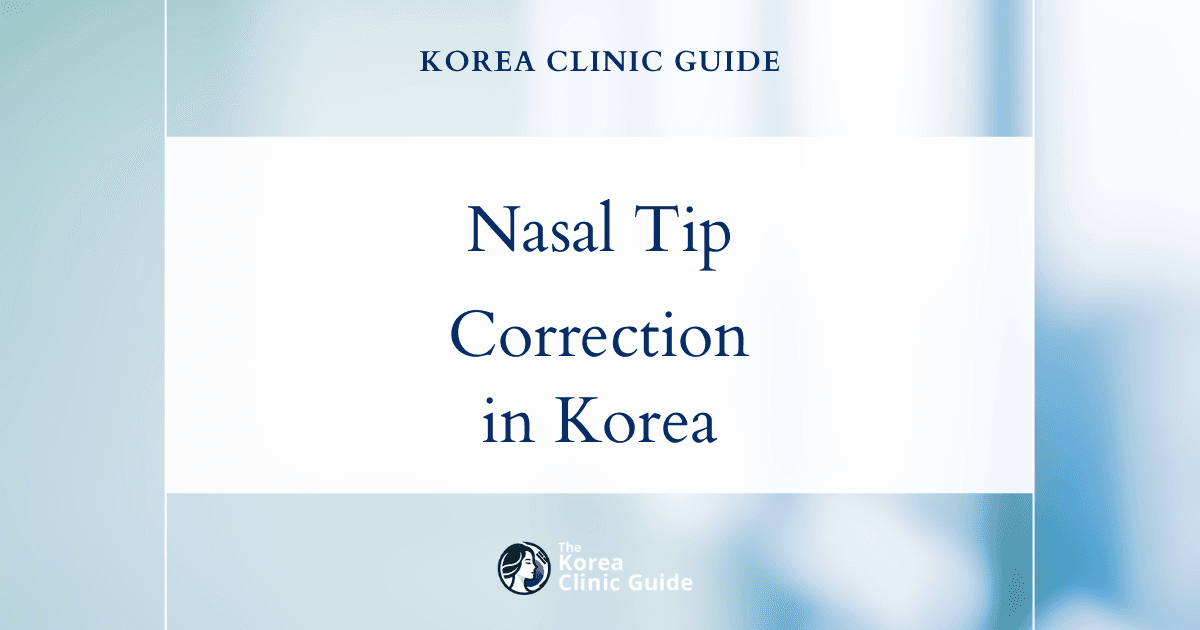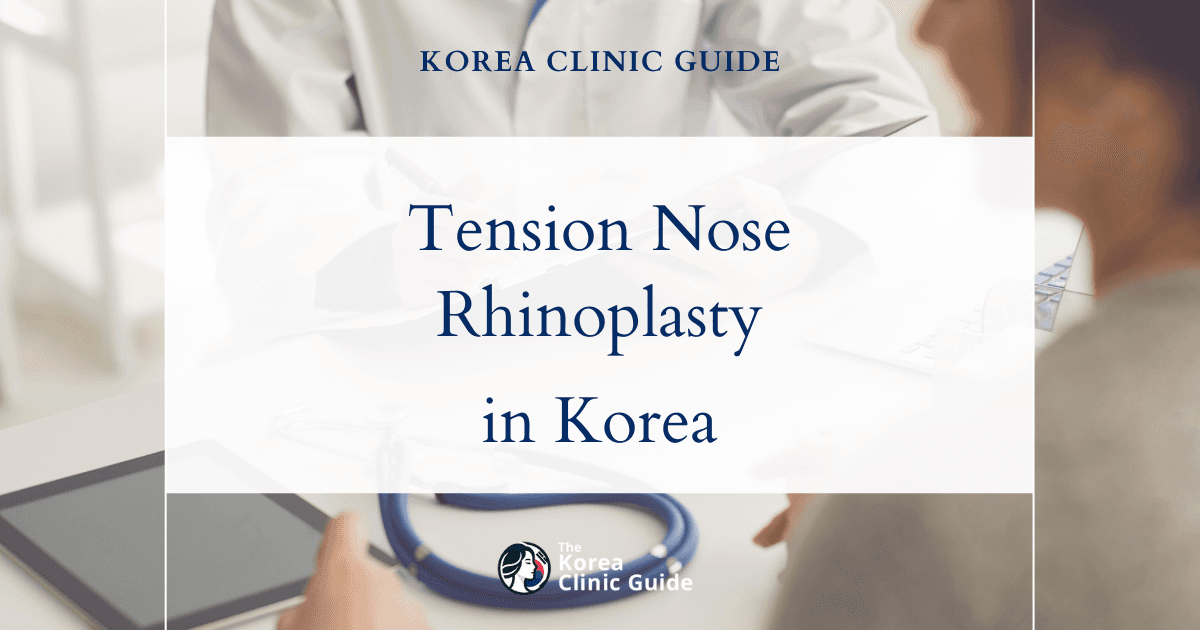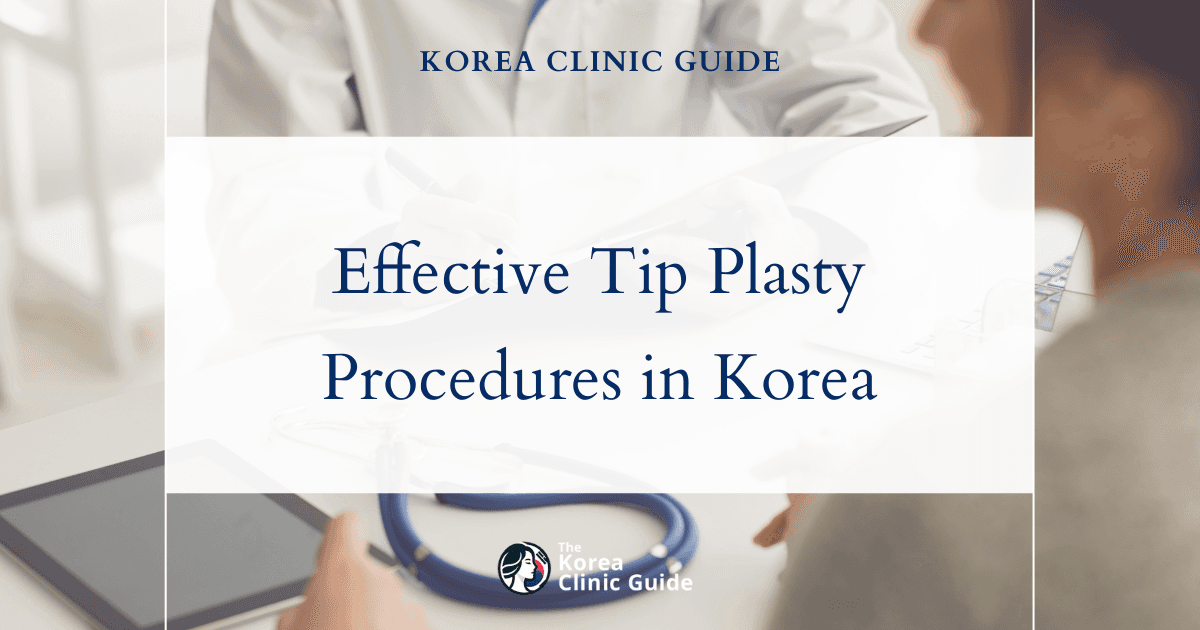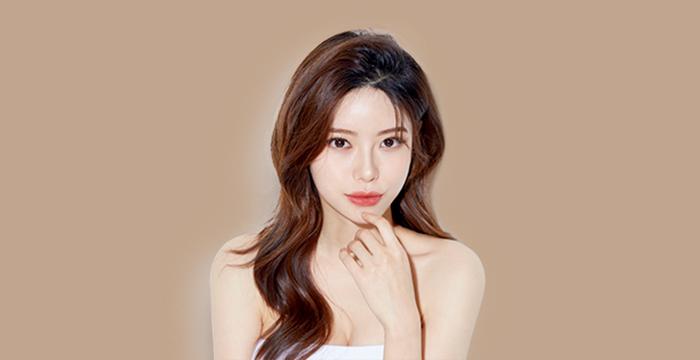Medical Tourism Blog
Flat Nasal Bridge Treatments in Korea: Nose Implant Procedures for a Perfect Look

Table of contents
- Nose Implant Procedures: A Detailed Medical Overview
- Best Clinics in Korea for Flat Nasal Bridge
- The Patient Journey: Getting a Nose Implant in South Korea
- Cost Analysis: Nose Implants in South Korea vs. International Destinations
- Patient Outcomes and Long-Term Considerations for Flat Nasal Bridge Correction
- Conclusions
- References
A flat nasal bridge, also known as a "lack of dorsal height," describes a nose with a low or underdeveloped bridge extending from between the eyes down toward the tip. This feature gives the nose a lower, more level profile from the side, resulting in a flatter facial appearance. Viewed from the front, the nose may look broader or wider due to the absence of prominent contours and angles typically seen in noses with a higher bridge. A practical sign for people with this nasal structure is that eyeglasses often slide down because the bridge lacks sufficient support.
It’s important to understand that a flat nasal bridge is often a natural, inherited facial trait. It is commonly found and considered attractive among individuals of Asian, African, or Indigenous descent. The degree of flatness varies widely, influenced largely by genetics.
Common Pseudonyms and Related Conditions
While "flat nasal bridge" and "lack of dorsal height" are straightforward terms, other medical terms can cause confusion if not clearly distinguished.
One such term is "saddle nose deformity," which differs from a naturally flat nasal bridge. Saddle nose deformity refers to a collapse or loss of height in the middle nasal bridge, creating a sunken or "saddle-like" appearance. This condition is usually acquired due to trauma (such as accidents or contact sports injuries, sometimes called "boxer's nose"), complications like septal hematoma or abscess, or vascular and autoimmune diseases. Pseudonyms include "pub nose" or "boxer's nose."
The broader term "low nasal bridge" can refer to both natural flatness and pathological conditions like saddle nose deformity. It may also result from genetic disorders (e.g., Down syndrome, Williams syndrome, cleidocranial dysostosis) or congenital infections (e.g., congenital syphilis) that impair nasal bridge growth.
Distinguishing between a naturally flat nasal bridge and acquired or congenital deformities like saddle nose is crucial. Though both present as a "lack of dorsal height," their causes, functional impacts, and surgical complexity differ. A naturally flat bridge usually calls for cosmetic augmentation, while saddle nose deformity often requires complex reconstruction. Clear understanding helps set realistic patient expectations and guides appropriate medical care.
Aesthetic and Potential Functional Concerns
For many, a flat nasal bridge is mainly an aesthetic issue that can cause self-consciousness or dissatisfaction with facial appearance. Since the nose is central to facial balance, its shape affects overall harmony and profile. In some cultures, a higher nasal bridge is a beauty ideal, which can pressure individuals to seek corrective surgery. This cultural influence is significant: while a flat nasal bridge is natural and admired in many Asian, African, or Indigenous communities, globalized beauty standards—often shaped by Western ideals—drive demand for nasal augmentation within these groups. For medical tourists, especially those from Asian backgrounds considering surgery in South Korea (a hub for Asian rhinoplasty), this cultural factor strongly influences demand. Surgeons there have extensive experience and specialized techniques tailored to these aesthetic goals.
Though mostly cosmetic, a flat nose can sometimes be linked to structural issues affecting airflow, potentially causing breathing difficulties or sinus problems due to less effective drainage. However, in most cases, a flat nasal bridge does not impair respiration or nasal structure.
Nose Implant Procedures: A Detailed Medical Overview
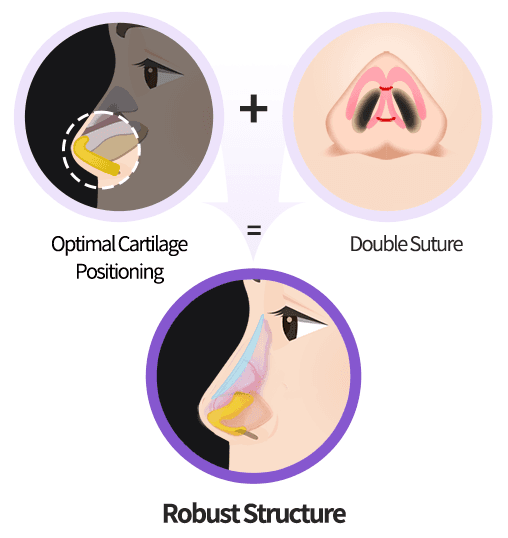
Rhinoplasty, or a "nose job," is surgery to reshape or reconstruct the nose. It addresses concerns about nasal size, shape, or function and can be cosmetic or medical. When treating a "flat nasal bridge" or "lack of dorsal height," the procedure is called augmentation rhinoplasty. Its goal is to enhance the nasal profile by building up and defining the bridge, often by adding grafts or implants to the bone and cartilage.
Besides aesthetic improvements, rhinoplasty can also improve breathing by correcting structural issues like a deviated septum or narrow nasal passages. This means consultations should consider both cosmetic desires and functional problems. Patients seeking cosmetic changes may discover functional issues that can be fixed simultaneously, leading to better overall results and satisfaction.
Types of Implant Materials
Choosing the implant material is key and depends on the patient’s nasal structure, medical history, augmentation needs, and surgeon preference.
Autologous Grafts (Patient’s Own Tissue): These are preferred for their natural compatibility and low risk of rejection or infection.
- Cartilage: Commonly harvested from the nasal septum or ear (concha cartilage) for minor to moderate augmentations. For larger changes, rib cartilage (costal cartilage) may be used. Donor cartilage like irradiated rib cartilage is another option. Cartilage is versatile, easy to shape, and feels natural. However, harvesting requires an extra surgical site, which may cause scars and longer recovery. Septal or ear cartilage may be too soft for major support, especially in ethnic rhinoplasty.
- Bone: Taken from the skull or rib, bone offers strong, stable support with low infection risk. It’s increasingly used for major nasal defects but is less malleable than cartilage.
Synthetic Implants (Alloplastic Materials):
- Silicone: Once the most common synthetic implant, especially in Asian rhinoplasty, silicone is soft, pliable, and easy to shape. It can be removed easily if needed and is inexpensive. However, it doesn’t integrate with tissue, making it prone to migration or displacement (about 3% rate), feels unnatural, and has higher infection (4%) and extrusion (2-4%) rates. Its popularity has declined with newer materials available.
- e-PTFE (Gore-Tex): A porous, flexible synthetic material favored for nasal dorsum augmentation, especially in Asian rhinoplasty. It allows tissue ingrowth for stability, feels natural, and has lower infection (1-3%) and extrusion (1%) rates than silicone. It is more expensive.
- Medpor: A porous high-density polyethylene implant that integrates well with tissue, moves less after placement, and has low infection rates. It can be sculpted precisely and is excellent for ethnic rhinoplasty or thick nasal skin. Sometimes combined with native cartilage if cartilage is too soft.
- PMMA (Polymethyl methacrylate): A strong, durable synthetic polymer customizable to patient needs, offering long-lasting results.
The trend in rhinoplasty favors materials with better biocompatibility and natural integration, such as autologous grafts and advanced porous synthetics, moving away from older materials like silicone. South Korea leads in adopting and developing these advanced techniques and materials, including composite implants like Silitex.
Surgical Techniques
Rhinoplasty is performed using two main approaches:
- Open Rhinoplasty: Involves a small incision across the columella (the tissue between nostrils), allowing the surgeon to lift skin and soft tissue for direct, extensive visibility of nasal structures. This approach suits complex cases or major augmentations. The external scar is usually small and discreet.
- Closed Rhinoplasty: All incisions are inside the nostrils, leaving no visible scars. It’s used for less extensive corrections. Recovery may be slightly quicker.
The choice depends on correction extent, aesthetic goals, surgeon expertise, and patient preference.
Anesthesia and General Procedural Steps
The procedure is done under local anesthesia with sedation or general anesthesia, depending on surgery complexity and patient comfort.
It starts with a detailed consultation covering aesthetic goals, medical history, and facial symmetry. The surgeon examines the nose internally and externally, considering factors like skin thickness and cartilage strength. Photos and often 3D imaging help visualize expected results.
During surgery, incisions are made (open or closed technique), and the nasal skin is lifted to create a pocket over the bridge. The pre-shaped implant or graft is inserted and carefully positioned for balance and natural appearance. Incisions are closed with sutures—internal stitches dissolve, external stitches are removed after 5-7 days. The surgery usually lasts 45 minutes to one hour.
Comparison of Nose Implant Materials for Augmentation Rhinoplasty
| Material Type | Description | Benefits | Disadvantages/Considerations | Common Uses/Suitability |
|---|---|---|---|---|
| Autologous Cartilage | Patient’s own tissue (septum, ear, rib) | Minimal rejection/infection; natural feel; easy shaping | Requires donor site; septal/ear cartilage may be too soft | Minor to significant augmentation; ethnic rhinoplasty |
| Autologous Bone | Patient’s own bone (skull, rib) | Strong, stable support; low infection rates | Less malleable; requires donor site | Major nasal defects; structural support |
| Silicone | Soft synthetic polymer | Easy shaping and removal; inexpensive | Migration risk; unnatural feel; higher infection/extrusion | Historically popular; declining use |
| e-PTFE (Gore-Tex) | Porous synthetic material | Biocompatible; tissue ingrowth; natural feel; lower infection | More expensive | Nasal dorsum augmentation, especially Asian rhinoplasty |
| Medpor | Porous high-density polyethylene | Precise sculpting; integrates well; low infection | May combine with cartilage if needed | Ethnic rhinoplasty; thick skin; precise contouring |
| PMMA | Durable synthetic polymer | Customizable; long-lasting | Potential foreign body reaction | Individualized implants |
Best Clinics in Korea for Flat Nasal Bridge
Listed below are the best clinics in Korea for flat nasal bridge:
| Clinic Name | Key Features | Special Techniques |
|---|---|---|
| THEPLUS Plastic Surgery | World-renowned expertise, internationally recognized surgeons (Dr. Jeong Jae-yong & Dr. Kim Taek-gyun), over a decade’s experience, individualized consultations, academic leadership (20+ publications), focus on both function and aesthetics, domestic & international patient care | 3D implant rhinoplasty, function and aesthetics harmonization, full spectrum of surgical/non-surgical rhinoplasty options, personalized planning for Asian nasal structure |
| Made Young Plastic Surgery | Advanced technology, 3D-CT analysis, 20+ years surgeon experience (Dr. Lee Byeong-hoe), top safety protocols, transparent aftercare, winner of 2022 Korea No.1 Award, comprehensive team with 15+ years average experience, CCTV procedure transparency, ethical and clinical standards | Precision 3D-CT planning, meticulous osteotomy, dorsal hump correction, autologous rib grafting, cross-check emergency protocols, individualized surgical plans (including revision up to 8th procedure) |
| Okay Plastic Surgery Clinic | Transformative individualized care, female-led team, patient-centered approach, comprehensive aesthetic and reconstructive services, supportive and holistic journey, multi-specialty expertise (body, breast, facial, and eye surgery), dedicated scar & skincare clinics | Advanced rhinoplasty (flat nasal bridge correction and nose refinement), integrated non-surgical enhancements, meticulous artistry for natural results, holistic treatment from surgery to aftercare |
THEPLUS Plastic Surgery
THE PLUS Plastic Surgery stands out as the premier clinic for addressing a flat nasal bridge in Korea, combining world-renowned expertise with cutting-edge techniques and an unwavering commitment to patient-centered care. At the heart of the clinic are Dr. Jeong Jae-yong and Dr. Kim Taek-gyun, internationally recognized leaders whose decades-long careers and prolific academic contributions have helped define rhinoplasty standards across Korea, Japan, and China. Dr. Jeong, president of the Korean Society of Plastic Surgeons and author of "Rebuilding Nose: Rhinoplasty for Asians," brings an unparalleled understanding of Asian nasal anatomy and harmonizes both function and aesthetics. Dr. Kim, celebrated for his role in "The 18 Masters of Korean Aesthetic Surgery" and his pioneering work with 3D implants, is a leading force in rhinoplasty and revision procedures, emphasizing natural results and balance in facial features. Both surgeons are highly sought-after educators, regularly sharing their expertise at global conferences and collaborating with leading institutions in Asia. Their academic influence, evidenced by over 20 publications and advisory roles, ensures THE PLUS is at the forefront of advancements in rhinoplasty for Asian patients. With individualized consultations, a full spectrum of surgical and non-surgical options, and a team whose experience exceeds a decade in practice, THE PLUS delivers superior outcomes for those seeking to correct a flat nasal bridge, making it the top choice for both domestic and international patients.
You can check out their website here: THEPLUS Plastic Surgery Website
Made Young Plastic Surgery
Made Young Plastic Surgery in Seoul stands as Korea’s premier destination for flat nasal bridge correction, blending advanced technology, artistry, and unmatched expertise to deliver natural, lasting results. The clinic utilizes optimal surgical materials and techniques that build a stable internal nasal framework, preventing nasal tip drooping and preserving a harmonious, attractive profile over time. Dr. Lee Byeong-hoe, a leading rhinoplasty authority with more than 20 years of exclusive experience—including mastery of complex revision rhinoplasty up to the 8th procedure—personally oversees each case with the support of a distinguished medical team averaging over 15 years of experience. Made Young’s precision 3D-CT analysis system allows for an in-depth, tailored assessment of nasal bone structure, septal deviation, and asymmetries, enabling surgical plans that address functional and aesthetic concerns for each individual. Advanced techniques such as meticulous osteotomy, dorsal hump correction, and autologous rib grafting ensure structurally ideal and straight nasal lines while considering overall facial balance, including the nasal bridge, tip, columella, and alar width. The clinic’s dedication to patient safety is reflected in their one-on-one anesthesiologist monitoring, robust cross-check and emergency response protocols, and complete procedure transparency via CCTV. Their comprehensive aftercare system, prestigious recognitions (such as the 2022 Korea No.1 Award and first place in customer satisfaction), and commitment to the highest ethical and clinical standards make Made Young the top choice for flat nasal bridge correction in Korea. Whether for first-time rhinoplasty or challenging revision surgery, patients can trust in Made Young’s depth of expertise, individualized approach, and unwavering focus on long-term, beautiful outcomes.
You can check out their website here: Made Young Plastic Surgery Website
Okay Plastic Surgery Clinic
At Okay Plastic Surgery Clinic, we are dedicated to redefining aesthetic care through a transformative and highly individualized approach. Each patient at our clinic receives a tailored solution that genuinely reflects their unique needs and aesthetic aspirations, thanks to our unwavering commitment to sincerity, precision, and patient-centered care. Our services go far beyond standard procedures, offering a supportive, comprehensive journey facilitated by cutting-edge medical techniques and the expertise of a specialized team led by a renowned female plastic surgeon.
We offer an extensive array of aesthetic services—ranging from body contouring, breast augmentation, and hairline correction to advanced facial lifting and eye plastic surgery—to address a wide spectrum of cosmetic concerns. In particular, our rhinoplasty center is recognized for its meticulous approach to flat nasal bridge correction and nose refinement, combining advanced surgical skills and artistry to achieve natural and harmonious results. Patients also benefit from our specialized clinics for scar management, skincare, and non-surgical enhancements, ensuring a holistic, seamless experience toward personal transformation and renewed confidence.
You can check out their website here: Okay Plastic Surgery Clinic Website
The Patient Journey: Getting a Nose Implant in South Korea
South Korea offers a structured, patient-focused process for nose implants, especially for medical tourists, emphasizing expert care and thorough planning.
Initial Consultation and Pre-operative Planning
The journey starts with a personalized consultation with a specialized plastic surgeon. This includes detailed discussions about aesthetic goals, medical history, and facial harmony. The surgeon examines the nose inside and out, assessing factors like skin thickness and cartilage strength. Photos are taken, and many clinics use advanced 3D imaging to show expected results. Korean surgeons are known for their expertise in Asian facial features and use both autologous tissue and synthetic materials like silicone or Medpor for augmentation.
The Surgical Process (Step-by-Step)
Surgery begins with anesthesia—general or local with sedation—based on complexity and patient preference. The surgeon chooses between open or closed techniques depending on correction needs and expertise. Open rhinoplasty offers better visibility; closed leaves no external scars.
After incisions, the nasal skin is lifted to create a pocket over the bridge. The implant or graft is inserted and carefully positioned for symmetry and natural appearance. Incisions are closed with sutures; internal stitches dissolve, external stitches are removed after 5-7 days. The procedure lasts about 45 minutes to one hour.
Post-Operative Care and Recovery Timeline
Recovery is gradual and requires following post-op instructions closely.
- Day 1-7: A plastic splint is taped to the nose to reduce swelling and maintain shape, worn about a week. Nasal packing may be used and removed within 24-48 hours. Swelling and bruising peak in the first 2-3 days. Mild to moderate pain is managed with medication. Keep the head elevated, avoid blowing the nose, strenuous activity, extreme facial expressions, and resting glasses on the nose for at least four weeks. Splint and external stitches are removed around day 7-8.
- Weeks 2-4: Most swelling and bruising subside. Patients can gradually resume daily activities but should avoid strenuous exercise, contact sports, heavy lifting, and resting glasses on the nose.
- Months 1-3: About 90% of swelling resolves; nose shape becomes clearer. Light exercise can resume after 3-4 weeks with surgeon approval. Protect the nose from sun exposure.
- Months 6-12: Residual swelling mostly gone by six months; subtle changes continue up to one year. Final results appear after one year. Rhinoplasty results are permanent, though some patients may opt for revision surgery.
Patients should maintain a healthy diet, avoid heat sources that cause swelling, use cold compresses on cheeks (not nose), and be patient. Success depends on both surgical skill and patient compliance with care instructions to minimize complications like bleeding, swelling, implant displacement, or infection.
Recommended Duration of Stay for Medical Tourists
Medical tourists should plan to stay in South Korea for 7 to 10 days post-surgery to allow removal of stitches and splint and attend follow-ups. After the first week, light activities like sightseeing are possible, making recovery less restrictive and improving the overall experience.
Typical Rhinoplasty Recovery Milestones
| Timeframe | Expected Changes | Activities Permitted/Avoided | Key Considerations |
|---|---|---|---|
| Day 1-7 | Peak swelling/bruising; mild pain; splint and packing in place | Avoid nose blowing, strenuous activity, extreme facial expressions, resting glasses on nose; keep head elevated | Pain managed with meds; packing removed 24-48 hrs; splint/stitches removed day 7-8 |
| Weeks 2-4 | Swelling/bruising mostly gone; nose shape emerges | Gradual return to daily activities; avoid strenuous exercise, contact sports, heavy lifting, glasses on nose | Patience needed; full results not yet visible |
| Months 1-3 | 90% swelling resolved; nose shape clearer | Light exercise after 3-4 weeks with clearance; protect from sun | Continued caution to avoid impact |
| Months 6-12 | Residual swelling gone by 6 months; subtle changes up to 1 year | Resume strenuous activities, glasses, nose blowing after 6 weeks | Full recovery is gradual; maintain healthy diet; emotional adjustment normal |
Cost Analysis: Nose Implants in South Korea vs. International Destinations

Rhinoplasty costs in South Korea vary by surgery complexity, clinic, and surgeon reputation.
Average Costs for Nose Implants in South Korea
Typical nose job costs range from $2,100 to $7,200 USD (₩3,000,000 - ₩10,000,000 KRW). Minor corrections start around $2,200 - $2,600 USD. Standard rhinoplasty addressing bridge, alar size, and septum width averages $2,100 to $3,500 USD. More complex surgeries like rib cartilage rhinoplasty cost $9,000 to $12,000 USD. Revision rhinoplasty ranges from $2,700 to $6,770 USD. Prices usually include surgeon fees, anesthesia, and facility use.
Factors Influencing Procedure Costs
- Clinic reputation: Top clinics with renowned surgeons charge up to 50% more.
- Procedure complexity: More extensive surgeries cost more.
- Implant material: Autologous grafts, especially rib cartilage, increase costs due to harvesting complexity.
- Patient needs: Anatomy, desired outcomes, and prior surgeries affect pricing.
- Additional services: Some clinics include pre-op tests and follow-ups in packages.
Higher costs often reflect more complex cases or highly experienced surgeons.
Comparative Analysis: South Korea vs. Major Medical Tourism Hubs
| Country | Standard Rhinoplasty (USD) | Open Rhinoplasty (USD) | Revision Rhinoplasty (USD) |
|---|---|---|---|
| South Korea | $2,100 - $7,200 | $4,500 - $8,500 | $2,700 - $9,000 |
| United States | $5,000 - $10,000 | $8,500 - $20,000 | $9,000 - $20,000 |
| Europe | $4,500 - $8,000 | N/A | N/A |
| Thailand | $3,000 - $5,500 | N/A | N/A |
| Turkey | $2,500 - $4,500 | $3,200 - $5,300 | $3,800 - $6,500 |
The Value Proposition for Medical Tourists in South Korea
South Korea offers competitive rhinoplasty pricing compared to Western countries without compromising quality. This is due to high procedure volumes, efficient healthcare, and surgeons’ expertise in Asian facial features. Korean surgeons are known for natural, harmonious results. Medical tourism agencies provide personalized support, easing logistics.
Though prices are higher than in Turkey or Thailand, South Korea’s specialized expertise and reputation justify the cost, making it a premium yet accessible destination for patients seeking tailored aesthetic outcomes.
Patient Outcomes and Long-Term Considerations for Flat Nasal Bridge Correction
Nose implant surgery for a flat nasal bridge can bring significant aesthetic and functional benefits. Understanding expected results, risks, and long-term realities is key to satisfaction.
Expected Aesthetic and Functional Improvements
Aesthetic: The main goal is enhancing the nasal profile by adding height and definition to the bridge and refining the tip. This creates better facial balance and symmetry, often boosting self-confidence. Augmentation can also make a wide or broad nose appear narrower from the front.
Functional: When structural issues cause breathing problems, rhinoplasty can correct them (e.g., deviated septum), improving airflow and nasal function.
Potential Risks and Complications
Common post-op effects include swelling, bruising, and mild to moderate pain, usually resolving in weeks though some swelling may last months.
Surgical risks include:
- Bleeding/Hematoma: Excessive bleeding may require intervention.
- Infection: Varies by implant type; silicone has ~4% infection rate, Gore-Tex 1-3%.
- Implant Migration/Displacement: Silicone implants have about 3% displacement risk.
- Implant Extrusion: Rare but possible; silicone 2-4%, Gore-Tex 1%.
- Asymmetry/Unsatisfactory Results: May require revision surgery.
- Scarring: Usually minimal but possible.
- Breathing Problems: Can worsen if nasal structures are compromised.
- Allergic Reactions: Rare, may require implant removal.
- Signs of Poor Outcome: Too low or scooped bridge, pinched nose or nostrils, overly upturned nose, pollybeak deformity, or unnatural tip width.
Understanding Revision Rates and Factors Influencing Them
Revision rhinoplasty rates vary from 3.3% to about 9.8%, higher for revision surgeries (11%) than primary (3.1%).
Factors linked to higher revision rates:
- Cosmetic-only cases: 7.9% revision rate, higher than functional cases (2.7%).
- Acquired or congenital deformities: 7.3% and 8.9% respectively.
- Graft type: Rib grafts (21.5%) and conchal grafts (11.4%) have higher revision rates than septal grafts (6.3%), reflecting case complexity.
- Demographics: Females (3.8%) slightly higher than males (2.6%); younger patients (13-18 years) higher at 5.9%; self-pay patients 6.3%.
- Previous nasal surgery or trauma: Increases revision likelihood.
- Failure to address nasal tip: Linked to dissatisfaction.
These highlight the importance of thorough pre-op consultation, psychological screening, and managing expectations.
Realistic Expectations and Emotional Adjustment Post-Surgery
Patients should have realistic expectations, knowing final results take up to a year to fully appear. Emotional adjustment to appearance changes is normal. Patience and support from family, friends, or professionals help. While most patients improve in appearance and breathing, some may need revision surgery.
Conclusions
Addressing a flat nasal bridge through nose implants, especially via medical tourism in South Korea, requires understanding both aesthetic desires and medical realities. A flat nasal bridge is often a natural ethnic trait, but global beauty standards influence demand for augmentation. This differs from acquired deformities like saddle nose, which need complex reconstruction.
Augmentation rhinoplasty enhances nasal height and definition, with a growing preference for autologous cartilage and advanced porous synthetics like Medpor due to better biocompatibility and natural integration. South Korea’s expertise and adoption of these materials offer a strong value proposition.
The patient journey involves thorough consultations, precise surgical techniques, and detailed post-op care. Medical tourists benefit from the ability to engage in light activities soon after surgery, improving their experience. Patient adherence to care instructions is vital for long-term success.
Financially, South Korea provides competitive pricing compared to Western countries, reflecting procedure complexity and surgeon reputation. Higher costs often correspond to more intricate cases or highly skilled surgeons.
Finally, while nose implant surgery can yield significant improvements, realistic expectations and emotional readiness are essential. Higher revision rates are linked to cosmetic-only cases, deformities, and complex grafts, underscoring the need for comprehensive pre-op assessment and clear communication. Informed decisions and diligent post-op care are key to achieving satisfying, lasting results.
References
1, 2, 3, 4, 5, 6, 7, 8, 9, 10, 11, 12, 13, 14, 15, 16, 17, 18, 19, 20, 21, 22, 23, 24
